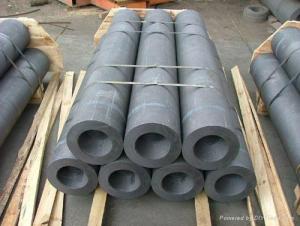Furnace graphite electrodes are the unsung heroes of the metallurgical industry. They are the heart and soul of electric arc furnaces, providing the heat and energy needed to melt and refine metals. These cylindrical marvels are made from high-quality graphite, a form of carbon that can withstand extreme temperatures and resist oxidation. But what makes these electrodes so special? Let’s dive into the fascinating world of furnace graphite electrodes and explore their heat and performance capabilities.
First and foremost, the heat generated by furnace graphite electrodes is nothing short of miraculous. They can reach temperatures of up to 3000 degrees Celsius, which is hotter than the surface of the sun. This incredible heat is essential for melting metals like steel, iron, and other alloys. The electrodes are designed to maintain a consistent temperature throughout the melting process, ensuring a uniform and high-quality end product.
But it’s not just about the heat; the performance of these electrodes is equally impressive. They are engineered to last, with a lifespan that can extend to several years under optimal conditions. This durability is crucial for the continuous operation of electric arc furnaces, as frequent replacements would be costly and time-consuming. The electrodes are also designed to resist the corrosive effects of the molten metal and the harsh furnace environment, further enhancing their longevity.
One of the key factors contributing to the performance of furnace graphite electrodes is their purity. High-purity graphite is used to minimize impurities that could compromise the electrode’s integrity and performance. This purity also allows for better electrical conductivity, which is essential for efficient energy transfer and heat generation.
Another aspect of performance is the electrode’s ability to withstand mechanical stress. The electrodes are subjected to intense forces during the melting process, as they are constantly in contact with the molten metal and the furnace’s atmosphere. To counteract this, furnace graphite electrodes are reinforced with various materials to increase their strength and resilience.
The manufacturing process of furnace graphite electrodes is a testament to human ingenuity and precision. It involves multiple stages, including the mixing of raw materials, molding, baking, impregnation, and machining. Each step is carefully controlled to ensure the final product meets the highest quality standards.
In addition to their primary function in electric arc furnaces, furnace graphite electrodes have other applications as well. They are used in the production of silicon metal, the manufacture of calcium carbide, and even in the production of certain chemicals. Their versatility is a testament to their unique properties and the demand for their heat and performance capabilities.
As we continue to innovate and push the boundaries of technology, the demand for furnace graphite electrodes is only expected to grow. With their ability to generate immense heat and deliver outstanding performance, these electrodes are poised to play a crucial role in the future of the metallurgical industry. So, the next time you see a furnace in action, take a moment to appreciate the humble graphite electrode, the unsung hero that makes it all possible.

